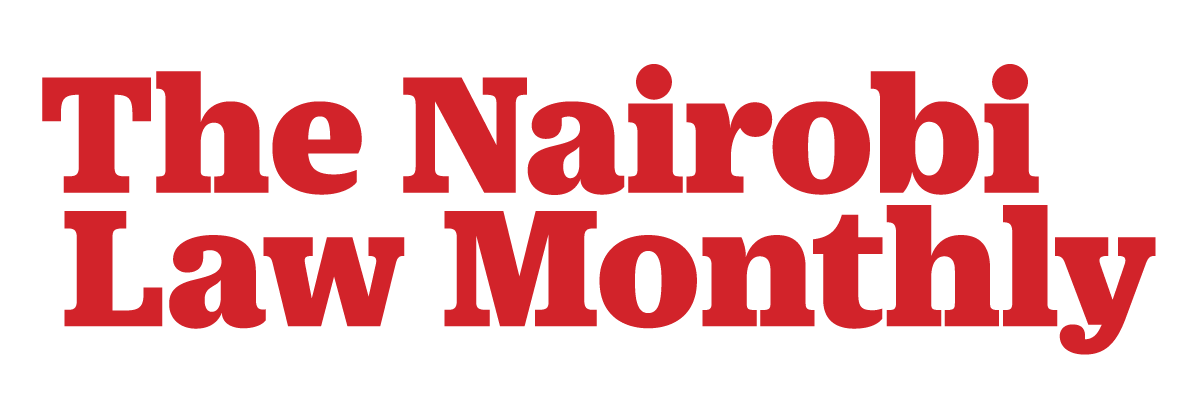By Macharia Kaguru
The entrenchment of corruption in Kenya has brought with it direct and indirect effects in all spheres of socio-economic development of the country. Put differently, corruption affects the proper running of the government, distorts the correct functioning of socio-economic institutions, hampers transparency and exploits the human person for selfish interest. In addition, corruption, especially within the public service and the government in general, renders respect for law and rules obsolete.
-
Sale!
Download Nairobi Law Monthly Magazine July 2024 Edition
Downloads Original price was: KShs200.00.KShs100.00Current price is: KShs100.00.
Whilst Kenya has an elaborate anti-corruption regime, corruption is still deeply entrenched. In the 2015 global Corruption Perception Index (CPI) released by Transparency International, Kenya scored 25 on a scale of zero to 100 with zero perceived to be the highly corrupt and 100 very clean. The 2015 CPI suggests that Kenya’s score is below the global average of 43 and Sub-Saharan Africa’s mean of 33. In the same year, Kenya was ranked position 139 out of 168 countries and territories included in the 21st edition of the CPI. These figures suggest that the anti-corruption strategies in place have failed to effectively beat corruption.
Kenya’s continued poor performance in the fight against corruption is as a result of a number flaws inherent in Kenya’s anti-corruption laws. To begin with, there is institutional multiplicity in oversight and investigation (overlap of institutional mandates) pitting the EACC and the DCI, which is the official investigatory arm of the National Police Service.
This is in view of the fact that the investigatory role played by the DCI with respect to corruption matters leads to overlap of institutional mandates, as the EACC is also mandated to investigate corruption cases. Secondly, the scope of application of the Anti-Corruption and Economic Crimes Act is limited. The Act seems to apply only to individual offenders and not legal persons. This paper seeks to make a case for the incorporation of the concept of administrative action in the act as an alternative to the courts. Thirdly is the issue of whether EACC’s lack of prosecutorial powers is an impediment to the successful prosecution of corruption cases?
Overlap of institutional mandates in investigations of graft cases
The Ethics and Anti-Corruption Commission is the overall national body charged with preventing and investigating corruption cases. EACC has four directorates namely; The Directorate of Investigations and Asset Tracing, Legal Services and Asset Recovery, Preventive Services, and Finance and Administration. The investigation, therefore, is a charge of the Directorate of Investigation and Asset Tracing (responsible for investigation).
Besides the EACC, there are other bodies that play a facilitative role in the fight against corruption. These include the ODPP, which prosecutes cases investigated by the EACC. The DCI is the investigatory arm of the National Police Service. It sometimes probes suspects for both the EACC and the DPP. The investigation contexture, in essence, draws in both the DCI and EACC’s Directorate of Investigation and Asset Tracing. Over time, these bodies have elected to indulge in personal and institutional conflicts that have chipped away their legitimacy, and brought disrepute, as far as prevention, investigation and eventual prosecution of corruption cases are concerned.
The challenge faced by institutions mandated to fight corruption is to specify their substantive jurisdictions, to avoid the conflict of jurisdiction with other bodies. One such challenge includes roles falling under their competencies. In addition, institutional multiplicity generates inefficiencies that cause institutional duplication, destructive competition and obstacles to cooperation and coordination. Article 252 of the Constitution authorises the EACC to carry out investigations relating to economic crimes; such cases do not fall within the purview of the DCI. The DCI has the mandate to investigate all crimes except offences under the Anti-Corruption and Economic Crimes Act, 2003. However, in practice, the DCI normally investigates corruption cases.
Problems that are prevalent with the use of multiple institutions is overwhelmingly common in Kenya where institutions, when put to task as to their inability to tame corruption, choose to trade tirades against each other. Problems in this area range from overlapping jurisdictional mandate, conflicts of competencies to the lack of competencies. Lack of competencies is common where institutions refuse jurisdiction in sensitive cases and shift responsibility to other institutions. This is so especially in matters of public interest where there is unrelenting public scrutiny as to the competency of the concerned investigatory body. In such cases, the investigating institutions are normally too quick to absolve themselves of blame by shifting blame to other bodies on account of jurisdictional competencies or lack of it. It then follows that if this area is overlooked (as is often is) in the process of designing the legal basis of the anti-corruption institutions, it will most likely hinder the performance of the institution.
Establishment and strengthening of administrative and civil sanctions for corruption offences by legal persons
This is basically concerned with corporate liability, with respect to corruption offences by legal persons other than individual persons. Kenya’s anti-corruption laws lack clear and effective roadmaps on how corporate corruption can be dealt with, with more precision just like individual corruption. Besides, criminal law is susceptible to delays, as it does not offer speedy mechanisms to punish corporate entities that, as a matter of fact, predominantly benefit from corrupt practices. A valuable strategy to tame corporate corruption would be to design a unique punishment structure for corporate entities involved in corruption.
The approach alluded to above is more effective in circumstances where conventional judicial institutions are crippled by rigidity and systemic inefficiencies. Specifically, such a system is based on administrative processes where sanctions are imposed against companies with corporate liability on corruption. Such a strategy, if implemented, relies on administrative processes to impose sanctions against liable corporate entities. The administrative process is effective in deterrence, especially in mismanagement in administrative contracts and procurement procedures.
The accruing advantage of administrative processes and sanctions is the creation of an alternative method of investigating and punishing corporate entities that are not dependent on the Judiciary. Perhaps a unique thing about such a system is that it is non-reliant on the courts, and hence saves on time and judicial cost. It is also devoid of unnecessary technical procedural difficulties, legal manipulation and delays.
The DPP is empowered, under Article 157 of the Constitution, to prosecute those alleged to have infringed on the law. In essence, the DPP prosecutes cases investigated by the EACC.
Should EACC be given prosecutorial powers?
The underlying rationale cited for establishing a standalone anti-corruption body such as the EACC is the desire to enhance the enforcement of a country’s anti-corruption laws against a number of factors, including bribery and conflict of interest. In recent times, the various institutions involved in the fight against corruption were put into task in a State House summit dubbed “Governance and Accountability Summit On Corruption” convened to discuss, among others, the prevalence of corruption in Kenya. During the summit, officers charged with both investigation and prosecutions were berated for waging a seemingly half-hearted fight on corruption. What ensued was a throwing of punches and blame games between the representatives of the EACC, DPP, DCI and the State Law Office. The general cause of concern was with regard to poor investigations, which results in poor prosecution and causes acquittals of corrupt individuals who would otherwise have been convicted in a properly investigated and prosecuted case.
The debate in this area centres on the prosecutorial role assigned to the ODPP, with respect to graft cases. The contention is that the prosecutorial role assigned to the ODPP with respect to corruption cases investigated by the EACC vitiates the ability of the later to effectively fight corruption. Anti-corruption bodies all over the world are broadly classified in one of these classifications: those with both prosecutorial power and enhanced investigative power; those possessing both subordinated prosecutorial power and enhanced investigative power, and one which does not have prosecutorial power but possesses enhanced investigative power.
The EACC falls under the third category.


